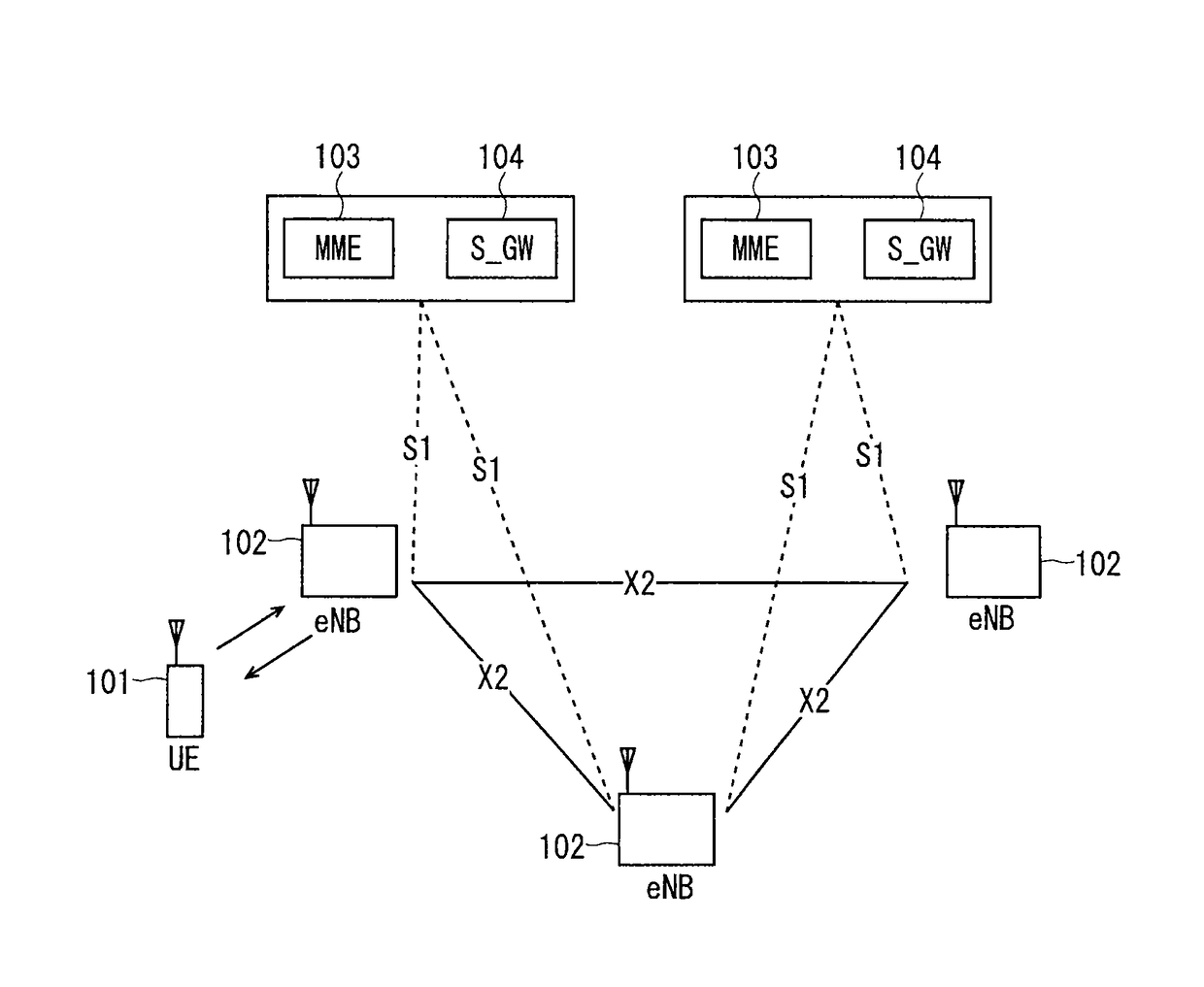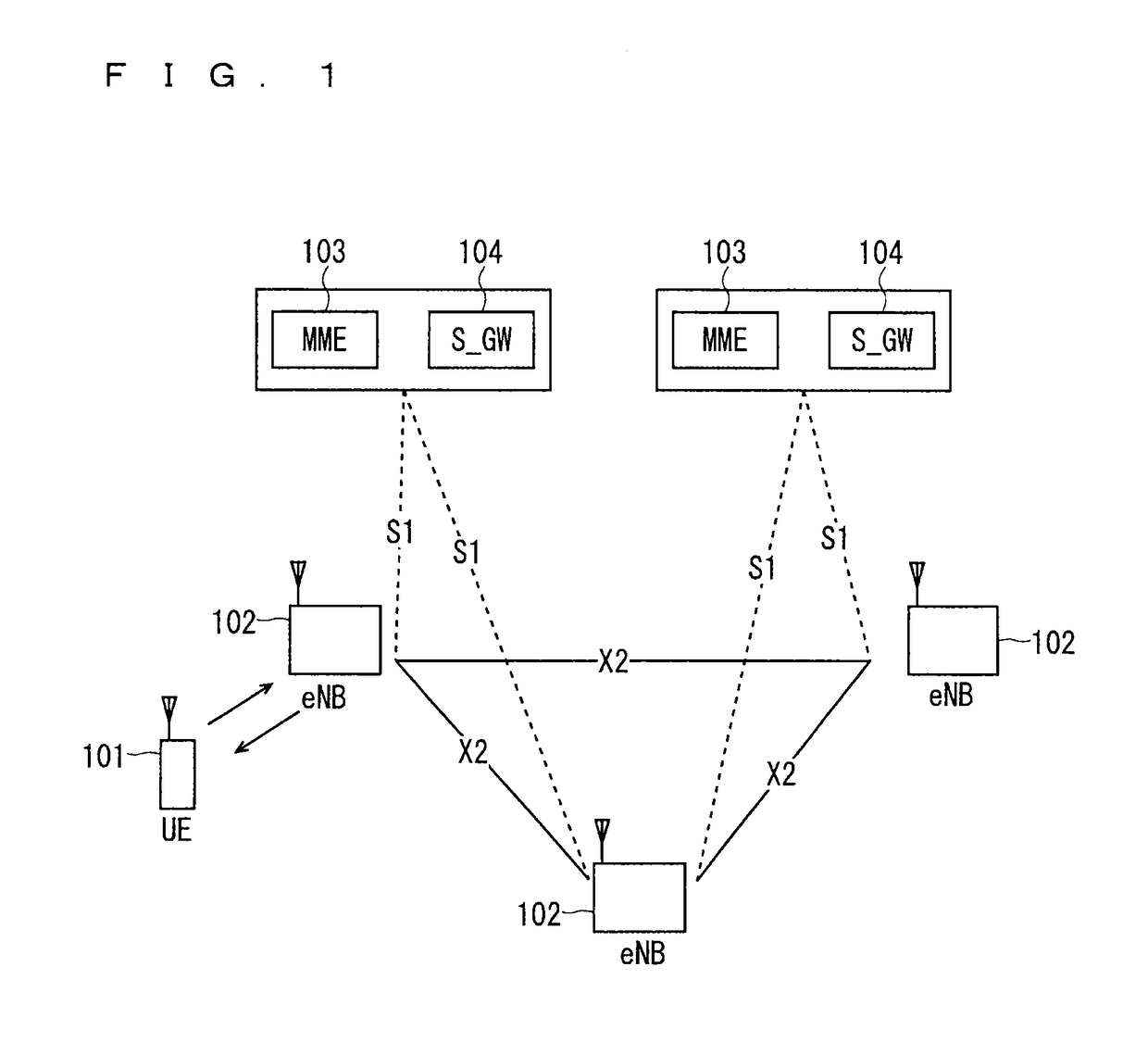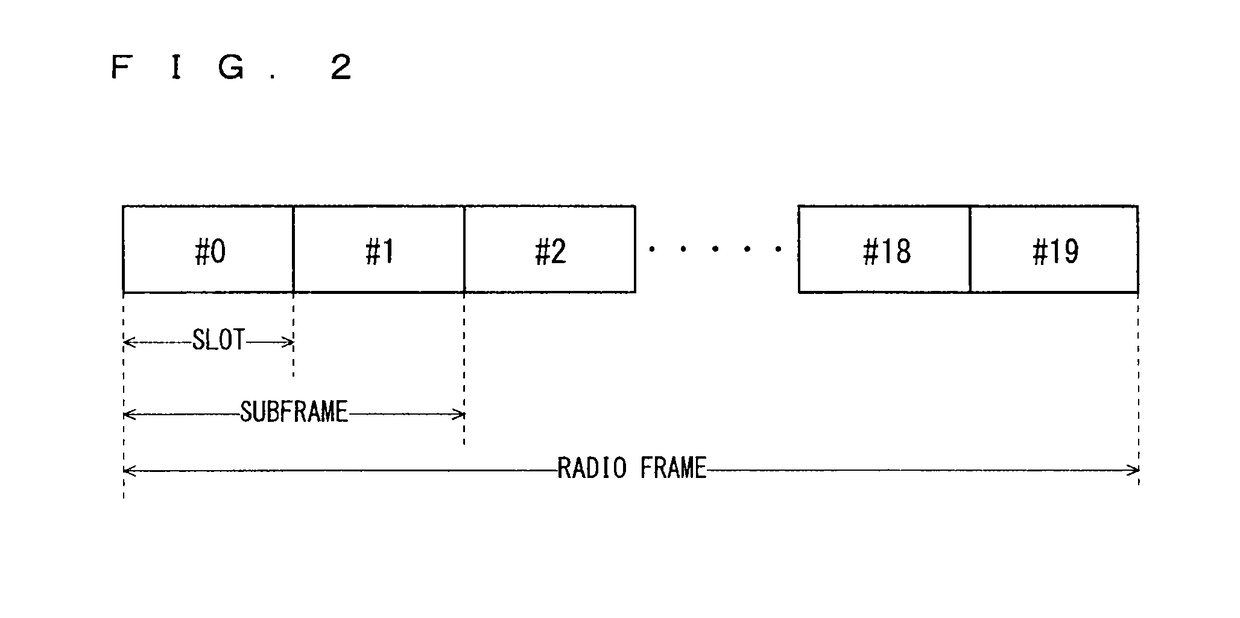Mobile communication system
a communication system and mobile technology, applied in multiplex communication, orthogonal multiplex, site diversity, etc., can solve problems such as collision risk, and achieve the effect of improving communication quality
- Summary
- Abstract
- Description
- Claims
- Application Information
AI Technical Summary
Benefits of technology
Problems solved by technology
Method used
Image
Examples
first embodiment
[0181]FIG. 7 is a block diagram showing an overall configuration of an LTE mobile communication system, which is currently under discussion of 3GPP. 3GPP is studying an overall configuration of a system including closed subscriber group (CSG) cells (Home-eNodeBs (Home-eNB; HeNB) of E-UTRAN, Home-NB (HNB) of UTRAN) and non-CSG cells (eNodeB (eNB) of E-UTRAN, NodeB (NB) of UTRAN, and BSS of GERAN) and, as to E-UTRAN, is proposing the configuration as shown in FIG. 7 (see Chapter 4.6.1 of Non-Patent Document 1).
[0182]FIG. 7 will be described. A user equipment device (hereinafter, referred to as a “user equipment” or “UE”) 71 is capable of performing radio communication with a base station device (hereinafter, referred to as a “base station”) 72 and transmits / receives signals through radio communication. The base stations 72 are classified into an eNB 72-1 that is a macro cell and a Home-eNB 72-2 that is a local node. The eNB 72-1 has a relatively large-scale coverage as the coverage in...
second embodiment
[0283]As described in the first embodiment, the UE measures the CSI-RS of each cell in the CoMP measurement set. Thus, the power consumption of the UE increases as the number of cells in the CoMP measurement set increases. An increase in UE power consumption can be prevented by reducing the number of cells in the CoMP measurement set. However, the number of cells to become candidates for CoMP transmission points reduces as the number of cells in the CoMP measurement set is reduced, causing a problem that optimum CoMP transmission points cannot be selected.
[0284]Although the problem that optimum CoMP transmission points cannot be selected is solved by rapidly and frequently changing the CoMP measurement set, the in-CoMP-measurement-set cells are changed through RRC signaling, hindering a rapid change, which causes a delay. The changed CoMP measurement set needs to be frequently notified the UE, leading to a problem that an RRC signaling amount increases.
[0285]In order to solve the ab...
third embodiment
[0326]R1-113295 (hereinafter, referred to as “Reference 1”) by 3GPP discloses that according to Releases 8, 9, and 10, the RRM measurement set is managed based on the CRS measurement results from one UE.
[0327]It is also disclosed that an additional RRM measurement mechanism is necessary for selecting a CoMP measurement set.
[0328]It is further disclosed that as an additional RRM measurement mechanism, the use of both of the CRS based RSRP / RSRQ measurement, that is, a normal RRM measurement and the CSI-RS based CQI, the use of the SRS, and the use of CSI-RS based RSRP / RSRQ measurement.
[0329]R1-113064 (hereinafter, referred to as “Reference 2”) by 3GPP discloses that as the method of selecting CoMP transmission points, the network selects CoMP transmission points based on the CSI-RS measurement results of the cells in the CoMP measurement set by the UE.
[0330]As described above, as to CoMP, the use of the results of CRS or CSI-RS measurement by the UE is studied as the method of selecti...
PUM
 Login to View More
Login to View More Abstract
Description
Claims
Application Information
 Login to View More
Login to View More - R&D
- Intellectual Property
- Life Sciences
- Materials
- Tech Scout
- Unparalleled Data Quality
- Higher Quality Content
- 60% Fewer Hallucinations
Browse by: Latest US Patents, China's latest patents, Technical Efficacy Thesaurus, Application Domain, Technology Topic, Popular Technical Reports.
© 2025 PatSnap. All rights reserved.Legal|Privacy policy|Modern Slavery Act Transparency Statement|Sitemap|About US| Contact US: help@patsnap.com



